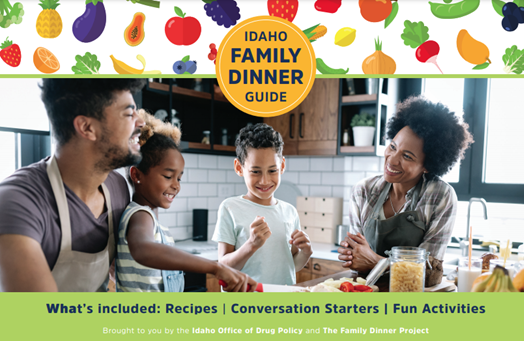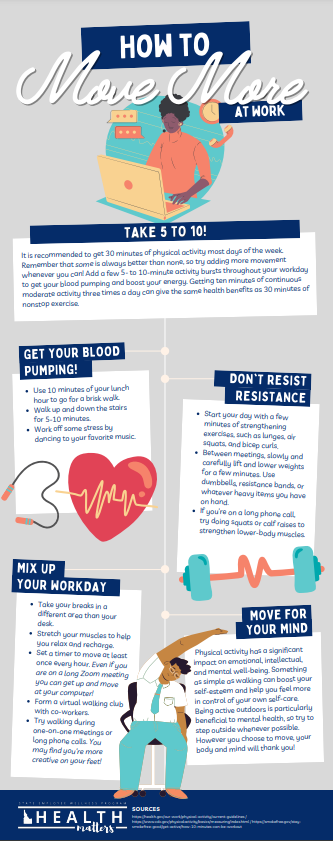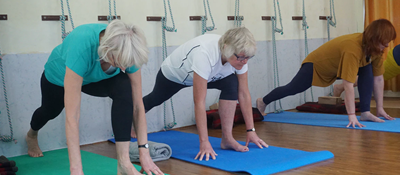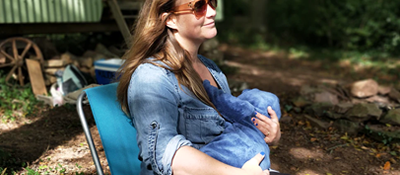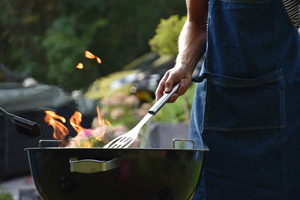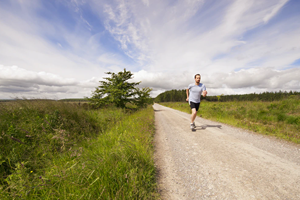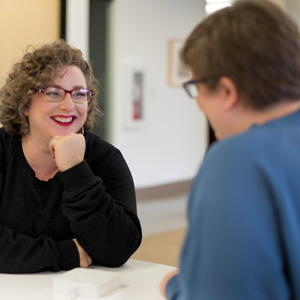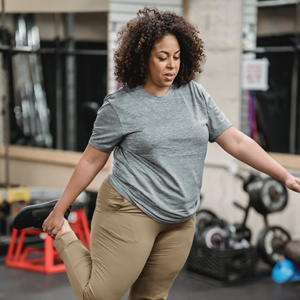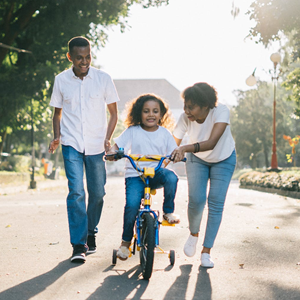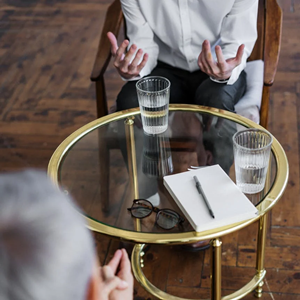Category: Uncategorized
Idaho Family Dinner Night 2021
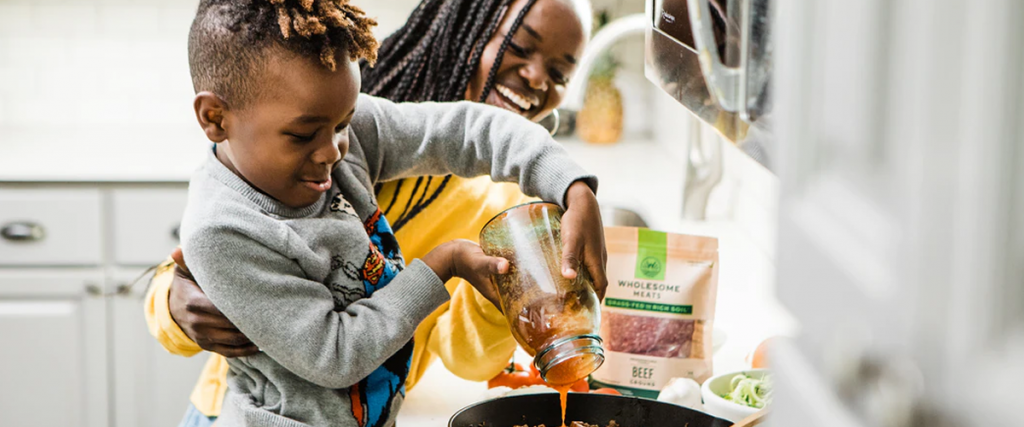
Celebrate Idaho Family Dinner Night on September 27!
Eating together regularly as a family is one of the best ways to build and maintain strong relationships with your children. Frequent family dinners are linked to positive benefits for youth, including lower rates of substance use, decreased stress, higher self-esteem, and better academic performance in school.
That’s why the Office of Drug Policy (ODP) is kicking off an Idaho Family Dinner Night campaign to encourage parents across the state to celebrate Idaho Family Dinner Night on the fourth Monday of September which falls on the 27th this year. Let’s make family meals a regular event in your homes all year round.
Idaho Family Dinner Recipe Guide
To help families celebrate and connect around the dinner table, ODP created the Idaho Family Dinner Recipe Guide, which is filled with conversation starters, games and activities, and simple, budget-friendly recipes, including:
- Slow Cooker Chicken Santa Fe Soup
- Quick Trick Chicken Tacos
- 5 Minute Easy Egg Fried Rice
- Build Your Own Baked Nachos
- Baked Chicken Parmesan
To develop the Recipe Guide and share resources with parents, ODP has partnered with The Family Dinner Project, a national nonprofit initiative that champions family dinner as an opportunity for family members to connect with each other through food, fun, and conversation about things that matter. ODP is encouraging Idaho parents to sign up for The Family Dinner Project’s free online program – Food, Fun, and Conversation: 4 Weeks to Better Family Dinners – for tools and resources to help make family dinners a household staple in just four weeks.
For more information about Idaho Family Dinner Night, download the Recipe Guide, and learn how to become a family dinner pro in three easy steps, visit https://odp.idaho.gov/family-dinner-night/
Move More
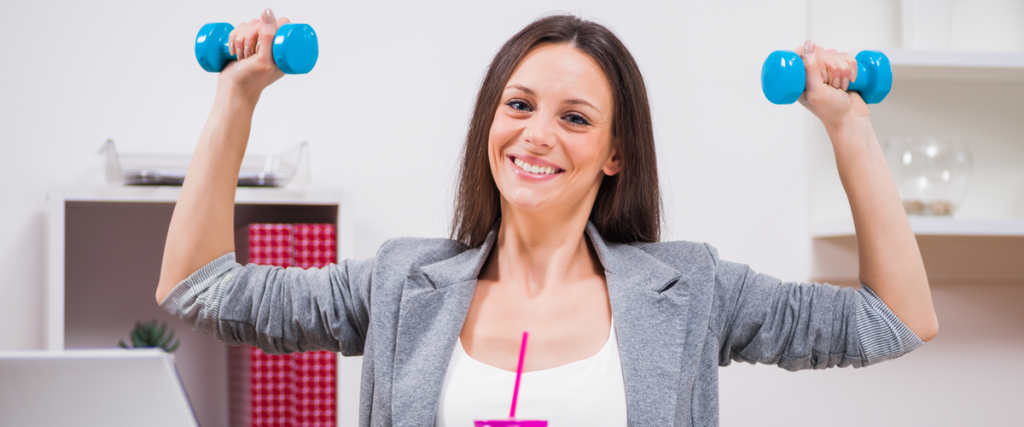
How to Move More at Work
Take 5 to 10!
It is recommended to get 30 minutes of physical activity most days of the week. Remember that some is always better than none, so try adding more movement whenever you can!
Add a few 5- to 10-minute activity bursts throughout your workday to get your blood pumping and boost your energy. Getting ten minutes of continuous moderate activity three times a day can give the same health benefits as 30 minutes of nonstop exercise.
Get Your Blood Pumping
- Use 10 minutes of your lunch hour to go for a brisk walk.
- Walk up and down the stairs for 5-10 minutes.
- Work off some stress by dancing to your favorite music.
Don’t Resist Resistance
- Start your day with a few minutes of strengthening exercises, such as lunges, air squats, and bicep curls.
- Between meetings, slowly and carefully lift and lower weights for a few minutes. Use dumbbells, resistance bands, or whatever heavy items you have on hand.
- If you’re on a long phone call, try doing squats or calf raises to strengthen lower-body muscles.
Mix Up Your Workday
- Take your breaks in a different area than your desk.
- Stretch your muscles to help you relax and recharge.
- Set a timer to move at least once every hour. Even if you are on a long Zoom meeting you can get up and move at your computer!
- Form a virtual walking club with co-workers.
- Try walking during one-on-one meetings or long phone calls. You may find you’re more creative on your feet!
Move for Your Mind
Physical activity has a significant impact on emotional, intellectual, and mental well-being. Something as simple as walking can boost yourself-esteem and help you feel more in control of your own self-care. Being active outdoors is particularly beneficial to mental health, so try to step outside whenever possible. However you choose to move, your body and mind will thank you!
More Resources for Moving More at Work
Be The 1 To
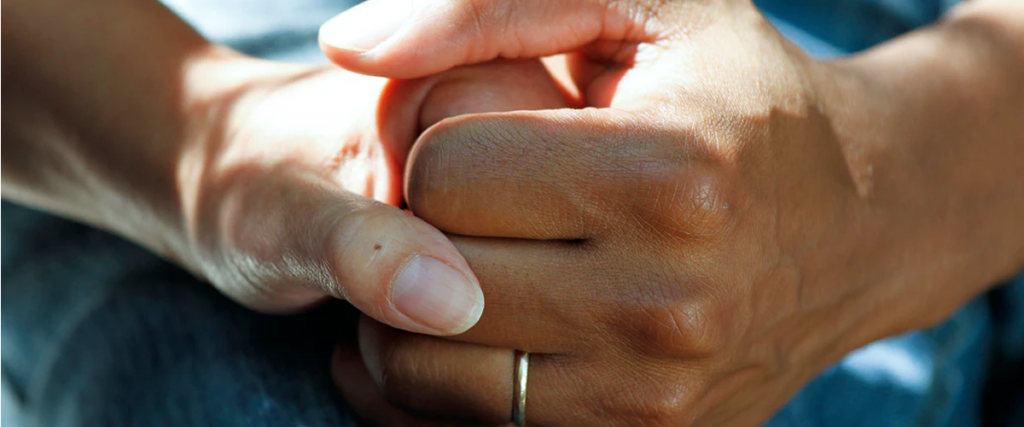
This page is not intended to and does not provide crisis intervention.
If you are currently in a crisis, or have immediate concerns about someone, call the Idaho Suicide Prevention Hotline at 208-398-4357 (HELP)
September is National Suicide Prevention Awareness Month
Suicide Prevention Awareness Month is a time to honor loved ones lost to suicide and renew efforts to prevent suicide deaths. It is also important to focus our attention on hope, help, strength, and recovery! Suicidal thoughts, much like mental health conditions, can affect anyone regardless of age, gender, or background.
We can all help prevent suicide. You can #BeThe1To save a life. The five action steps below for communicating with someone who may be thinking about suicide are supported by evidence in the field of suicide prevention.
Ask
Research shows people who are having thoughts of suicide feel relief when someone asks them in a caring way. Findings suggest acknowledging and talking about suicide may reduce rather than increase suicidal ideation.
Don’t be afraid to ask the tough question. When somebody you know is in emotional pain, ask them directly:
“Are you thinking about killing yourself?”
Become a QPR Gatekeeper to Prevent Suicide
Just like CPR, QPR is an emergency response to someone in crisis and can save lives. QPR stands for Question, Persuade, and Refer – 3 simple steps that anyone can learn to help save a life from suicide. QPR consists of three life-saving skills: recognize the warning signs of suicide; offer hope; get help and save a life. Learn more about free QPR Gatekeeper training opportunities in Idaho.
Mental Health Myths
Help bust the stigma about mental health by separating myth from fact!
Sources: https://www.bethe1to.com/ / https://suicidepreventionlifeline.org/promote-national-suicide-prevention-month/ / https://www.mentalhealth.gov/basics/mental-health-myths-facts
Building Healthy Relationships

Strong, healthy relationships are important throughout your life. Your social ties with family members, friends, neighbors, coworkers, and others impact your mental, emotional, and even physical well-being.
“We can’t underestimate the power of a relationship in helping to promote well-being,” says NIH psychologist and relationship expert Dr. Valerie Maholmes. Studies have found that having a variety of social relationships may help reduce stress and heart-related risks. Strong social ties are even linked to a longer life. On the other hand, loneliness and social isolation are linked to poorer health, depression, and increased risk of early death.
As a child you learn the social skills you need to form and maintain relationships with others. But at any age you can learn ways to improve your relationships.
NIH funds research to find out what causes unhealthy relationship behavior. Researchers have created community, family, and school-based programs to help people learn to have healthier relationships. These programs also help prevent abuse and violence toward others.
What Is Healthy?
Every relationship exists on a spectrum from healthy to unhealthy to abusive. One sign of a healthy relationship is feeling good about yourself around your partner, family member, or friend. You feel safe talking about how you feel. You listen to each other. You feel valued, and you trust each other.
“It’s important for people to recognize and be aware of any time where there is a situation in their relationship that doesn’t feel right to them or that makes them feel less than who they are,” Maholmes advises.
It’s normal for people to disagree with each other. But conflicts shouldn’t turn into personal attacks. In a healthy relationship, you can disagree without hurting each other and make decisions together.
“No relationship should be based on that power dynamic where someone is constantly putting the other partner down,” Maholmes says.
If you grew up in a family with abuse, it may be hard as an adult to know what healthy is. Abuse may feel normal to you. There are several kinds of abuse, including physical, sexual, and verbal or emotional. Hurting with words, neglect, and withholding affection are examples of verbal or emotional abuse.
In an unhealthy or abusive relationship, your partner may blame you for feeling bad about something they did or said. They may tell you that you’re too sensitive. Putting you down diminishes you and keeps them in control.
In a healthy relationship, however, if you tell your partner that something they said hurt your feelings, they feel bad for hurting you. They try not to do it again.
Abuse in an intimate relationship is called domestic or intimate partner violence. This type of violence involves a pattern of behaviors used by one person to maintain power and control over someone that they are married to, living with, or dating now or in the past. A pattern means it happens over and over.
In an unhealthy or abusive relationship, you may not be allowed to spend time with family, friends, and others in your social network. “One of the signs that’s really important in relationships where there is intimate partner violence is that the partner that is being abused is slowly being isolated from family and friends and social networks,” Maholmes says. “Those social networks are protective factors.”

How to Help Someone in an Unhealthy Relationship
- Let them know that you’re worried about them.
- Listen without judging or blaming.
- Tell them that it’s not their fault.
- Offer to go with them to talk to someone who can help.
- Visit www.thehotline.org for more tips on how to help.
Social Ties Protect
Studies have shown that certain factors seem to protect people from forming unhealthy relationships over their lifetime. The protection starts early in life. NIH-supported research has shown that the quality of an infant’s emotional bond with a parent can have long-lasting positive or negative effects on the ability to develop healthy relationships.
“The early bond has implications that go well beyond the first years of life,” says Dr. Grazyna Kochanska, an NIH-funded family relationships researcher at the University of Iowa. The goal of Kochanska’s research projects is to understand the long-term effects of that early bond and to help children develop along positive pathways and avoid paths toward antisocial behaviors.
A family that functions well is central to a child’s development. Parents can help children learn how to listen, set appropriate boundaries, and resolve conflicts. Parents teach children by example how to consider other people’s feelings and act in ways to benefit others.
Secure emotional bonds help children and teens develop trust and self-esteem. They can then venture out of the family to form other social connections, like healthy friendships. In turn, healthy friendships reduce the risk of a child becoming emotionally distressed or engaging in antisocial behaviors.
On the other hand, having an unhealthy relationship in the family, including neglect and abuse, puts a child at risk for future unhealthy relationships.
“One caring adult can make a huge difference in the life of kids whose family structures may not be ideal or whose early life is characterized by abuse and neglect,” says Dr. Jennie Noll of the Center for Healthy Children at Pennsylvania State University. “That caring adult could be an older sibling, or a parent, or someone else in the family, a teacher—the kind of people who have a large influence in communicating to the child that they matter and that they’re safe, and that they have a place to go when they are needing extra support.”
Healthy friendships and activities outside of the home or classroom can play protective roles during childhood, too. In fact, everyone in a community can help support the development of healthy connections. Adults can serve as good role models for children, whether the children are their own or those they choose to mentor.
Helping and Getting Help
At any age, your relationships matter. Having healthy relationships with others starts with liking yourself. Learn what makes you happy. Treat yourself well. Know that you deserve to be treated well by others.
Having an unhealthy or abusive relationship can really hurt. The connection may be good some of the time. You may love and need the person who hurts you. After being abused, you may feel you don’t deserve to be in a healthy, loving relationship.
With help, you can work on your relationship. Or, sometimes in an abusive relationship, you may be advised to get out. Either way, others can help.
If you or a friend needs help with an unhealthy relationship, contact the National Domestic Violence Hotline at www.thehotline.org or 1-800-799-SAFE. If you know a child who may need help, find resources at the Child Welfare Information Gateway at www.childwelfare.gov.
Source: https://newsinhealth.nih.gov/2018/04/building-social-bonds
Connections Count
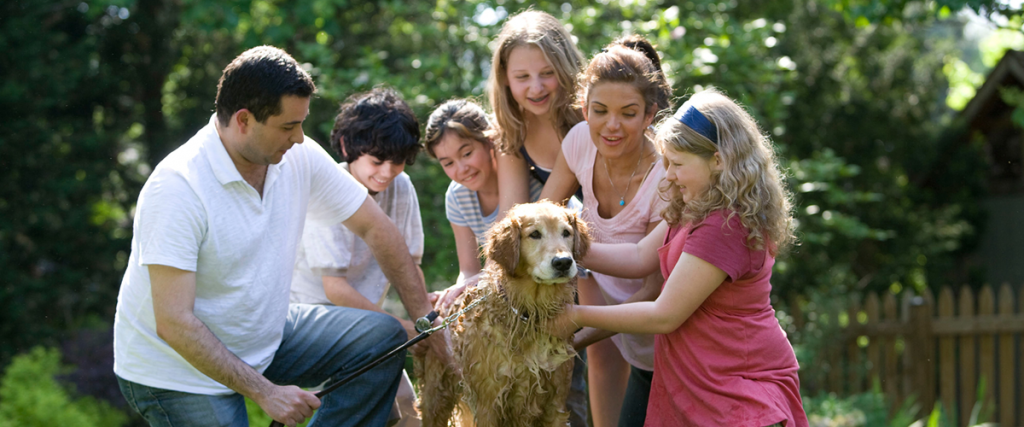
Strong, healthy relationships are important throughout your life. Your social ties with family members, friends, neighbors, coworkers, and others impact your mental, emotional, and even physical well-being. From the time you’re born, your relationships help you learn to navigate the world. You learn how to interact with others, express yourself, conduct everyday health habits, and be a part of different communities from those around you. Learn how positive social habits can help you build support systems and stay healthier mentally and physically.
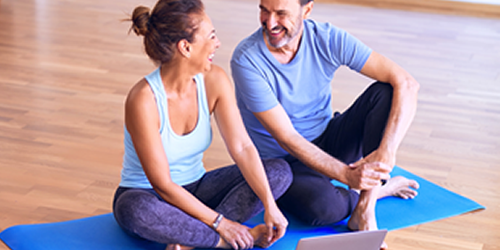
Active with Others
Where you live, work, or go to school can have a big impact on how much you move and even how much you weigh. Being active with others in your community can have a positive effect on your health habits and create opportunities to connect.
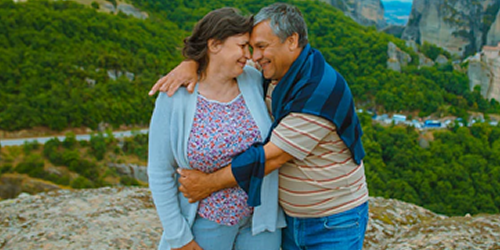
Cuddles, Kisses, and Caring
Cuddles, kisses, and caring conversations are key ingredients of close relationships. Our links to others have powerful effects on our health. Whether with romantic partners, family, friends, neighbors, or others, social connections can influence well-being.

Relationships Old and New
The secret to a meaningful life is meaningful relationships. Think about the sorts of relationships you currently have and the kinds of relationships you would like to have. You may find a need to make new relationships, or strengthen existing ones.
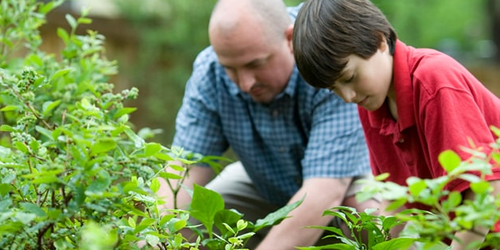
Positive Parenting
Raising children can be both rewarding and challenging. You’re likely to get a lot of advice along the way, but every parent and child is unique. Being sensitive and responsive to your kids can help you build positive, healthy, and resilient relationships together.
Mindfulness Exercises

The Cambridge Dictionary defines mindfulness as “the practice of being aware of your body, mind, and feelings in the present moment, thought to create a feeling of calm.” It means being aware of your thoughts, feelings, and surroundings instead of going through life on autopilot. Mindfulness matters because it can help manage stress, anxiety, and depression. It has also been associated with a greater enthusiasm for life and improved self-esteem.
The four exercises below are examples of ways to start, or enhance, a mindfulness practice.
Exercise 1: Body Scan
The body scan practice helps you become more aware of how all parts of your body are feeling. When you first start this practice, it may be helpful to go to a quiet location. As you gain experience, you can do the exercise anywhere and anytime. You can choose to do this exercise for five minutes or for more than an hour.
- Find a comfortable position. The first few times you do this practice, try lying on your back with your eyes closed.
- Take five breaths. Feel your belly rise as you breathe in. Feel your belly fall as you breathe out. Continue to breathe slowly throughout the exercise.
- Note how your body feels as a whole. What information is your body giving you? Is there any area of tension?
- Now begin to focus on each part of your body in order.
- Begin with the toes of your left foot. What do you feel? Cool air? A soft blanket? A scratchy sock? A confining shoe? Perhaps you don’t feel anything. This is OK. Take a deep breath and end your focus on your toes.
- Next move to the sole of your left foot. Again, what do you feel? When ready, take a deep breath, and end your focus on your foot.
- Continue to focus on each part of your body. Give each part your full attention in the order listed. (Go down the first column, starting with “top of the left foot” and then the second column. Thus, “left fingers” will follow “chest”). Once you finish with an area, take a breath and move on to the next area. When your mind wanders, be gentle with yourself, knowing that this is what minds do. Take a breath and refocus where you left off.
- top of the left foot / left ankle / left shin / left calf / left knee / left thigh / left hip / pelvis / right foot and leg (as you did the left) / return to your pelvis / belly / back (lower, middle, and upper) / chest / left fingers / then in order–your left hand, wrist, forearm, upper arm, shoulder / right hand and arm (as you did the left) / neck / face / scalp / top of the head
- End the practice by returning to your breath. Take five breaths, noting the rise and fall of your belly.
Exercise 2: Seated Meditation
Go to a quiet place where you will not be disturbed.
- Decide how long you want to practice. Do you want to start with two to five minutes? Consider setting a timer, so you know when the time is up without being distracted by looking at a clock.
- Sit comfortably.
- If you are in a chair, put both feet on the floor.
- If you are sitting on a cushion, it is best to have your hips higher than your knees. Position yourself on the cushion so that your knees can rest on the floor. Or support your knees with a prop that keeps them lower than your hips.
- Let your spine stretch up into a neutral spine position, lengthening out like a string of pearls.
- Put your hands in a comfortable position.
- Set an intention for this meditation. It may be as simple as “May I cultivate mindful awareness in my life.” Another example is “May I seek and practice the benefits of silence and stillness.”
- Close your eyes and turn your attention inward, or gaze softly at the floor.
- Focus on your breathing.
- When you breathe in, is it fast, slow, noisy, quiet, easy, or difficult?
- When you breathe out, is it fast, slow, noisy, quiet, easy, or difficult?
- If your attention wanders, accept that it is normal. Then resume focusing on your breathing. Be kind to yourself. Minds wander; that is what they do. The key is to gently bring your awareness back to your breath when it wanders.
- Continue to focus on your breath.
- When the timer sounds, slowly open your eyes.
- Think about your experience.
- How did it feel to focus on breathing for this length of time?
- Concentrating on your breath in this way can be challenging at first. It becomes much easier with practice.
Exercise 3: Mindful Awareness While Commuting
How do you usually spend the time as you move from one location to another? Often people are lost in thought. You can arrive without thinking how you got to your new location. Moving from point A to point B gives you an opportunity to practice mindful awareness. You can do this whether you walk, cycle, drive, or use public transportation.
Note: For safety reasons, it is best if you first become familiar with this mindful awareness practice while you are a passenger and not driving a car or riding a bike.
Try the following exercise during your daily travels.
- Avoid distractions like a radio, headphones, phone, computer, print materials, eating and drinking.
- What do you see? Look around you with fresh eyes. What colors, shapes, textures, sizes, and movements do you see? Try not to judge what you see. Use this as a time to simply see. Keep your awareness in the present moment, not the past or the future.
- What do you hear? Are the sounds around you loud, soft, harsh, continuous, off and on, high-pitched, or low-pitched? What direction do the sounds come from?
- What do you smell? Breathe your usual way through your nose. Pay attention to any smells you detect. Then take a deep breath through your nose. Do you detect any different smells?
- What do you taste? Is your mouth open or closed? Are you aware of any taste?
- What do you feel physically? (For example, do you feel your hands on a steering wheel? Your feet on bicycle pedals or a sidewalk? Your behind on a seat?) What are you aware of at these points of contact? (For example, do your feet hurt?) What are you aware of elsewhere in your body? Are your shoulders relaxed, tense, or neutral? What about your jaw, your neck, and your back? What emotions do you notice?
- As you travel, continue to notice what you see, hear, smell, taste, and feel.
- When you arrive at your new location, bring this same attention into the rest of your activities. This can make for a richer day
Exercise 4: Mindful Moment
- Find a comfortable seated position.
- Take five breaths. Feel your belly rise as you breathe in. Feel your belly fall as you breathe out.
- Notice your jaw.
- Notice how the left side of your jaw feels. Is your jaw tense, relaxed, or neutral? Are you clenching your teeth together? If so, separate them to relax your jaw.
- Now do the same with the right side of your jaw.
- Take a slow, deep breath. How does it feel to have your teeth separated and your jaw relaxed?
- Notice your neck.
- Does your neck feel tense, relaxed, or neutral as if lengthened like a string of pearls?
- Allow your neck to stretch out into a neutral position. Look straight ahead. Stretch the back of your neck. Tuck your chin slightly.
- Mindfully note your neck. As you feel safe to do so, slowly turn your head to look toward your right shoulder. Do not force the motion, just let it flow and stop the turning where you feel safe.
- Take a breath before returning to neutral.
- Again mindfully note your neck. As you feel safe to do so, slowly turn your head to look toward your left shoulder. Do not force the motion, just let it flow and stop the turning where you feel safe.
- Raise your chin so that you are looking where the wall in front of you meets the ceiling.
- Take a breath before returning to neutral.
- Lower your chin as far toward your chest as possible without straining.
- Take a breath before returning to neutral.
- Again mindfully note your neck. As you feel safe to do so, slowly bring your right ear down toward your right shoulder, keeping your shoulder relaxed. Do not force the motion, just let it flow and stop moving where you feel safe.
- Take a breath before returning to neutral.
- Again mindfully note your neck. As you feel safe to do so, slowly bring your left ear down toward your left shoulder, keeping your shoulder relaxed. Do not force the motion, just let it flow and stop moving where you feel safe.
- Take a slow, deep breath. Notice how it feels to have your neck relaxed.
- Notice your shoulders.
- Focus on your shoulders. Do they feel tense, relaxed, or neutral?
- Raise your shoulders toward your ears.
- Breathe in deeply. Allow your shoulders to relax as you breathe out.
- Roll your shoulders forward three times.
- Roll your shoulders backward three times.
- Allow your shoulders to come to rest in a relaxed, neutral position.
- Take a slow, deep breath. How does it feel to have your shoulders relaxed?
- Take five breaths. Feel the rise of your belly as you breathe in. Feel your belly fall as you breathe out.
- Maintain your awareness of the jaw, the neck, and the shoulders throughout your daily activities. Repeat this exercise whenever you feel tension building in these areas. This will help keep you tuned in to your body and help you release unnecessary tension.
These exercises were written for the Veterans Health Administration (VHA) by Charlene Luchterhand MSSW, Education and Research Coordinator, Integrative Health Program, University of Wisconsin Department of Family Medicine and Community Health. They were included in a handout as part of a document for clinicians, Clinical Tool: Mindful Awareness Practice in Daily Living, written by Adrienne Hampton, MD. The handout was reviewed and edited by Veterans and VHA subject matter experts. Veterans Health Administration (VHA) by Charlene Luchterhand MSSW, Education and Research Coordinator, Integrative Health Program, University of Wisconsin Department of Family Medicine and Community Health.
Source: “Mindful Awareness Practice in Daily Living” from US Department of Veterans Affairs, June 2020
Women’s Health Check Program

By: Brie Veltri, Health Program Specialist, Idaho Department of Health and Welfare
What is Women’s Health Check
Women’s Health Check provides FREE breast and cervical cancer screenings and diagnostic testing for women who qualify. Service providers include public health districts, primary care offices, hospital systems, mobile mammography services, community health centers, and more. Local Coordinators across the state can answer questions about eligibility, covered services, and can also enroll women into the program.
Breast and Cervical Cancer Medicaid: Women screened or diagnosed with cancer and certain precancers through Women’s Health Check may be eligible to receive treatment through Breast and Cervical Cancer Medicaid.
Why it Matters
Breast cancer is the second leading cause of death for Idaho women. If caught early, your chances of survival increase greatly. Cervical cancer is preventable with regular screening tests and follow-up. It also is highly curable when found and treated early.
Who Women’s Health Check Serves
- Those without health insurance or those with Medicaid
- US Citizens or Legal Permanent Resident for at least five years
- Low income women
- Women ages 21-64
Spread the word about the free screenings available through
If you (or anyone you know) might qualify, contact a local women’s health check coordinator for more information
Women’s Health Check!
Enroll Today!
Local coordinators across Idaho can provide more information and assist in enrollment. For more information contact a local coordinator to learn how out program can help you. Call one today!
- Panhandle Health District (Benewah, Bonner, Boundary, Kootenai, and Shoshone Counties)
- Tina Ghirarduzzi / 208-415-5140
- Southwest District Health (Adams, Canyon, Gem, Payette, Owyhee, and Washington Counties)
- Karen Douglass / 208-365-6371 ext. 5601
- South Central Public Health District (Blaine, Camas, Cassia, Gooding, Jerome, Lincoln, Minidoka, and Twin Falls Counties)
- Melinda Bauman / 208-737-5900
- Southeastern Idaho Public Health (Bannock, Bear Lake, Bingham, Butte, Caribou, Franklin, Oneida, and Power Counties)
- Darlene Davis / 208-239-5290
- Eastern Idaho Public Health (Bonneville, Clark, Custer, Fremont, Jefferson, Lemhi, Madison, and Teton Counties)
- Rachel Mugleston / 208-533-3198
- Lucy Castaneda / 208-533-3209
- Terry Reilly (Ada, Canyon, and Owyhee Counties)
- Don Morrison / 208-466-7869 ext. 1223
- Family Medicine Residency of Idaho (Ada and Elmore Counties)
- Ilian Mendez / 208-514-2500 ext. 1024
- Saint Alphonsus Breast Care Center (Ada, Adams, Boise, Canyon, Elmore, Gem, Owyhee, Payette, Valley, and Washington Counties)
- Debbie Sager / 208-367-8332
- St. Mary’s Hospital (Clearwater, Idaho, Latah, Lewis, and Nez Perce Counties)
- 208-962-3267
Ways to reduce the risk of cancer:
Mastering Mindfulness

Four Simple Ways to Pay More Attention to the Current Moment
The Cambridge Dictionary defines mindfulness as “the practice of being aware of your body, mind, and feelings in the present moment, thought to create a feeling of calm.” It means being aware of your thoughts, feelings, and surroundings instead of going through life on autopilot. Mindfulness matters because it can help manage stress, anxiety, and depression. It has also been associated with a greater enthusiasm for life and improved self-esteem.
Research shows the average person spends nearly 47% of their waking hours thinking about something other than what they are doing. That means we are spending almost half of our time operating on autopilot. During a busy workday finding time for a 30-minute mindful exercise can feel impossible. But that does not mean you cannot be mindful at work. Mindful exercises can be as short as you want. Even one minute of consciously connecting with one of your senses can be classified as a mindful exercise. You do not even need to close your eyes or be sitting down. Be creative and find short times in your day to add a bit of mindfulness. Think of mindfulness as a muscle. The more you exercise your mindful muscle, the stronger it becomes. Use the four simple strategies below to help you cultivate more mindfulness in your day-to-day life.

Take Some Deep Breaths
Breathe in through your nose to a count of 4, hold for 1 second and then exhale through the mouth to a count of 5. Repeat often.
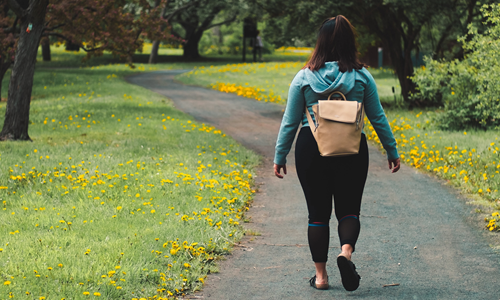
Enjoy a Stroll
As you walk, pay attention to your breath and the sights and sounds around you. If thoughts and worries enter your mind, note them but then return to the present.

Practice Mindful Eating
Be aware of taste, textures, and flavors in each bite. Listen to when your body is hungry and full.

Do a Body Scan
Bring your attention to how each part of your body is feeling. This can help you connect with your body.
More Mindfulness Resources:
- Wandering Mind Not a Happy Mind
- How to Practice Mindfulness Throughout Your Work Day
- 10 Ways to Be Mindful at Work
- Stressing Out? S.T.O.P.
Summer Safety

National Safety Month in June is an opportunity to prevent unnecessary injuries and deaths at home, at work, on the roads, and in our communities. It’s almost summer which means it’s time for fun in the sun, water sports, road trips, campouts, and BBQs! Make safety a priority for a happy and healthy summer with family and friends.
Elder Abuse
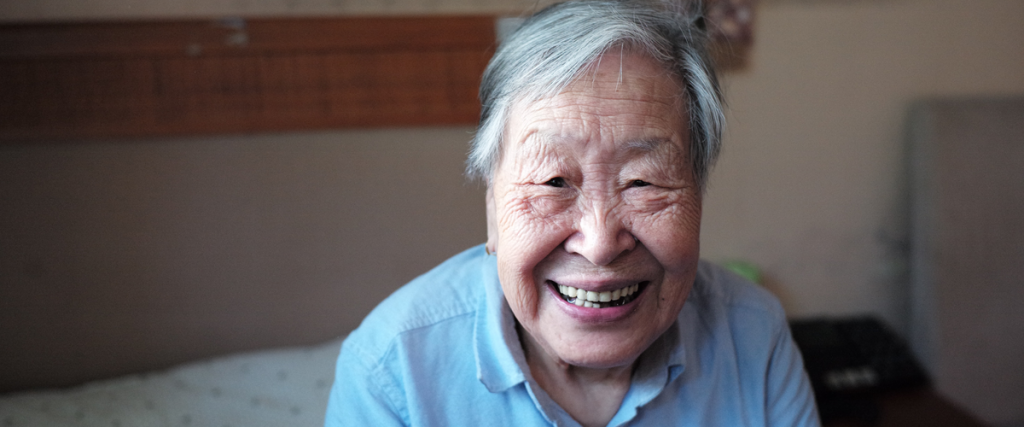

An estimated 5 million older adults, or 1 in 10 older Americans experience physical, mental, and financial elder abuse, neglect, or exploitation each year. Unfortunately, it occurs in every demographic and can happen to anyone—a family member, a neighbor, even you. It is estimated that only one in five of these crimes are discovered.
Each year, throughout the month of June, the Idaho Commission on Aging, our statewide partners, and communities around the world promote Elder Abuse Awareness Month to coincide with World Elder Abuse Awareness Day, June 15. The purpose of this awareness campaign is to promote better understanding of abuse and neglect of older people by raising awareness of the cultural, social, economic, and demographic processes affecting elder abuse and neglect.
As we confront the COVID-19 virus, and physical distancing measures, we know that social isolation increases older adults’ risk of experiencing abuse, neglect, and exploitation and the likelihood of unreported instance of concerns from neighbors and others in Idaho communities. We also know fraudsters are taking advantage of this crisis with new scams. This makes the World Elder Abuse Awareness Day vision of “stronger supports for older adults” more important than ever before. Individual and community prevention efforts and supportive services help keep older adults safe and healthy, to help stop abuse before it happens.
This year, in June, join the Idaho Commission on Aging and communities around the world in bringing awareness to elder abuse as we continue our work to build strong support for elders.
Wear purple clothing or a ribbon on June 15!
When someone asks you if purple has special meaning, start a conversation about elder abuse. It’s more common than you think, and rarely discussed socially.
Resources:
- Visit to the National Center on Elder Abuse website to increase your knowledge about elder abuse.
- Learn how you can decrease loneliness in older Idahoans with the Let’s End Loneliness Campaign in Idaho.
- Visit the ICOA website to learn about programs to keep vulnerable Idahoans safe.
Melanoma Awareness Month

By: Brie Veltri, Health Program Specialist, Idaho Department of Health and Welfare
What is Skin Cancer?
- Skin cancer is caused when UV rays penetrate the skin and damage connective tissue and DNA.
- Skin cancer is the most common form of cancer in the United States.
- The two most common types are carcinomas. They are highly curable, but can be disfiguring and costly to treat.
- Melanoma, the third most common skin cancer, is more dangerous and causes the most deaths. These three types of skin cancer are caused primarily by overexposure to ultraviolet (UV) light.
Sunburn Fast Facts
- Your risk of getting skin cancer DOUBLES with five or more sunburns.
- Redness develops three to five hours after the damage is done, making it hard to tell if you are getting burnt.
- Redness peaks 12-24 hours after sun exposure.
- If you have fair skin or hair, you have less melanin. This means you are at a higher risk of a sunburn.
- Medicines, such as ibuprofen and antibiotics, can increase your risk for sunburns.
Who is at Risk?
The following might put you at greater risk of developing skin cancer:
- Light skin colors
- Blonde and red hair
- Blue or green eyes
- Personal or family history of melanoma
- Exposure to sun through work and play
- History of sunburns in early life
- History of indoor tanning
- Large number of moles
Prevention
By doing the following, you can reduce your risk of skin cancer:
- Seek shade
- When possible, outdoor activities should be scheduled to avoid peak UV radiation periods (generally between 10:00 a.m. and 4:00 p.m.).
- Cover up
- Wear hats, scarfs, or other head coverings to keep sun off your face and neck.
- Wear sunglasses to protect your eyes.
- Wear clothing that covers your arms and legs.
- Apply sunscreen
- Use sun protection factor (SPF) 30 or higher.
- Reapply sunscreen every two hours.
- Make sure to cover all areas of your face and body.
Learn More
Use these resources to learn more about skin cancer, what it is, and ways to protect yourself against it.
You Are Not Alone
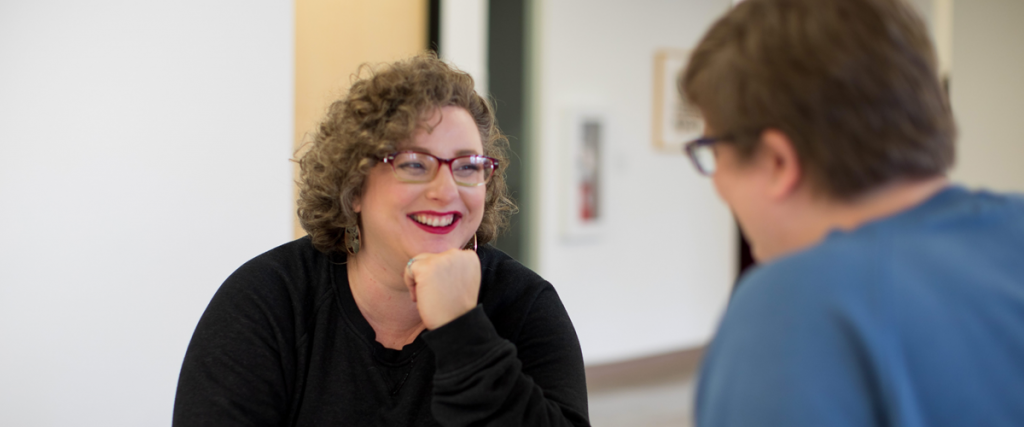
May is Mental Health Awareness Month
The goal of Mental Health Awareness Month is to fight stigma, provide support, and raise awareness about mental health within our communities.
You Are Not Alone
In the United States, one in five adults live with some form of mental illness and nearly half of all adults will experience a mental illness at some point during their lifetime.1
Mental health is essential to a person’s well-being, relationships, and the ability to live a full and productive life. People with untreated mental health issues, such as depression and anxiety, are at high risk for many unhealthy and unsafe behaviors, including alcohol or drug abuse, violent or self-destructive behavior, and suicide—the 2nd leading cause of death for Idahoans aged 10-44.2
Social stigma can make navigating life with a mental illness even more challenging. The stigma surrounding mental illness can cause people to feel embarrassed or ashamed, ultimately preventing them from seeking the help they need. Talking openly about mental health will help to eliminate some of the associated stigma and is one small step we can all take to help improve the mental health landscape in Idaho.
One in five adults in the United States live with some form of mental illness.
source: national institute of mental health
Bust Stigma
Mental health conditions are as common and treatable as physical conditions such as high blood pressure or asthma. Unfortunately, because of stigma, we do not usually talk about mental health conditions as openly as physical conditions. Use the following tips to help bust mental health stigma in your workplace and larger community:
- See the whole person. A person’s mental health condition does not define who they are.
- Offer support. Do not be afraid to reach out to someone you feel might be struggling.
- Challenge misconceptions around mental health. Speak up if you hear a coworker or friend spreading stereotypes and myths about mental illness.
- Understand that your words matter. Use respectful language around mental health and avoid labels like “crazy” or “unstable.”3
Employee Assistance Program
Talking with a therapist or counselor helps people process their thoughts, feelings, behaviors, stresses, goals, and past experiences.4 The Employee Assistance Program, or EAP, provides confidential, short-term counseling services for benefit eligible employees and their dependents to help them handle concerns constructively before they become major issues. Benefit eligible State of Idaho employees and their dependents may receive 1 to 5 visits per person per plan year with no copayment required. Visit the Office of Group Insurance’s website for details.
Employee Assistance Program
The 10 Tools
Boost your own mental health, or support the people you care about, with the Ten Tools. This list of proven resilience strategies can help you feel stronger and more hopeful.5
If you or someone you know is in crisis or emotional distress, please contact the Idaho Suicide Prevention Hotline:
Text or call 208-398-HELP (4357)
or the National Suicide Prevention Lifeline:
Call 1-800-273-TALK (8255)
- https://www.nimh.nih.gov/health/statistics/mental-illness.shtml
- hhttps://static1.squarespace.com/static/5533c618e4b0e276c293c601/t/5c5b79b3ee6eb05bcb43f2b9/1549498809038/Idaho-State-Facts.pdf
- https://business.kaiserpermanente.org/insights/mental-health-workplace/supporting-mental-health
- https://www.mhanational.org/therapy
- https://www.mhanational.org/ten-tools
Diabetes Prevention During a Pandemic

By: Nanci Jenkins, MS, RDN, LD, WIC Dietitian and D,HD, & S Grant Coordinator for Panhandle Health District 1
Have you checked your weight lately? Is your weight creeping up? Are your blood pressure and blood sugar levels rising? Or maybe you have no idea because it’s 2020 and the U.S. is still in the grip of a pandemic. You are not alone! Let’s face it; COVID-19 has changed many of our lives. We are spending more time at home. Our eating habits are changed and our routines for exercise are upended. Viola! The COVID-Ten arrives; ten pounds of unwanted weight gain commonly noted this fall as we realize one more effect the Pandemic has had on our health. Time to step away from the less healthy crowd starting today! The sooner you take that first step, the sooner you decrease your risk of Diabetes, Heart Disease, Stroke or an even more severe illness if you get COVID-19. So what can you do? The following 3 simple steps will start you on your path towards better health.
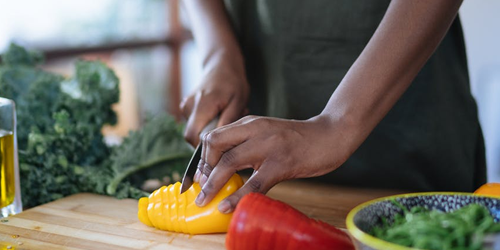
1. Eat Well
Idahoan’s are told to stay at home these days so why not perfect the art of healthy cooking? Focus on increasing vegetables, fiber, and water. Worried about getting COVID-19 at the store? Have the store shop for you and pick up your groceries or have them delivered.

2. Eat Less
Watch an old movie from the 1950’s and pay attention to their plate and glass sizes. Try serving yourself on the smallest ones in your house. Or ask yourself the simple question before every meal or snack, “Do I really need to have these calories right now?”
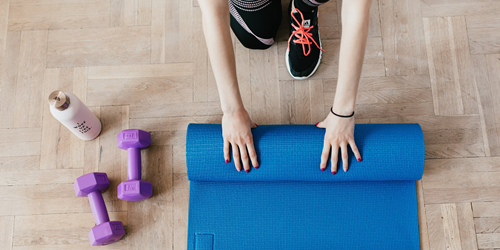
3. Be More Physically Active
You’ve been walking daily and that’s great! Now try adding an exercise video when you return from your walk or later in the day. Ever tried yoga? “Sit and Be Fit”? Maybe hand weights, wall push-ups, or resistance bands are more your style? Make time for 150 minutes of activity at a moderate pace every week!
If you are at least 18 years old and are overweight or obese with a risk of diabetes, you may qualify for the National Diabetes Prevention Program (DPP). This is a CDC recognized and Medicare approved group Lifestyle Change program. Panhandle Health District 1 (PHD1) offers DPP programs in Hayden and in Sandpoint as well as virtually. Go to https://panhandlehealthdistrict.org/diabetes-programs for more information. If you prefer an in person program and live outside of the health district’s geographical area, you may find a DPP program closest to you by going to https://nccd.cdc.gov/DDT_DPRP/Registry.aspx.
Take that first step alone or take it with others in a group with a Lifestyle Coach as in a DPP class. It’s up to you to take it any way that works best for you. Make today be the day you step towards a healthier version of wonderful you!
 Official Government Website
Official Government Website
